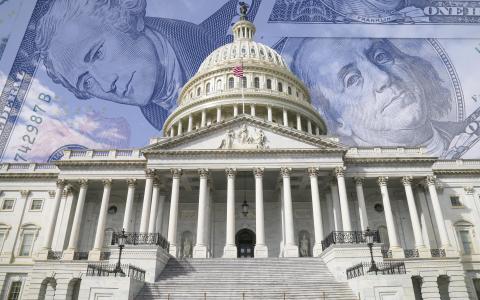
(SmartAsset) - President Joe Biden and House Speaker Kevin McCarthy (R-Calif.) reached a tentative agreement to raise the U.S. debt ceiling over the weekend, allowing a ray of hope to peek through the fiscal cloud that had been hanging over D.C. This deal would avert a potential default, which many economists think would be catastrophic. Here’s what you need to know about the deal.
Debt Ceiling Deal Basics
The debt ceiling is simply the maximum amount the U.S. government can owe by law.The current borrowing limit is a staggering $31.4 trillion. This number was hit in January.
In an interesting twist, the proposed deal suggests a two-year suspension of the debt limit instead of merely raising it. This would mean that the contentious issue of the national debt ceiling would remain off the table until after the 2024 presidential election.
A Bipartisan Effort with Significant Implications
Should this agreement gain approval from the lawmakers of both sides of the aisle, it would provide the federal government the ability to borrow money to pay its bills until 2025. However, the path to garnering this support is not without its challenges.
The proposed deal brings with it a slew of provisions, including several spending cuts favored by the Republicans, alongside increases in defense and veterans’ spending.
If you’re ready to be matched with local advisors that can help you achieve your financial goals, get started now.
Neither Republicans nor Democrats got exactly the deal they wanted, so both parties will have to sell their more hardline members on agreeing to this proposal.
The Deal’s Impact on Programs and Services
One of the standout aspects of this debt ceiling agreement is the full funding for veterans’ medical care, a provision that is in line with Biden’s proposed 2024 budget blueprint. There are also suggested revisions to the Supplemental Nutrition Assistance Program (SNAP or “food stamps” as they are commonly deemed).
Simultaneously, the deal anticipates some reductions in funding. This includes pulling back on the hiring of new Internal Revenue Service agents and reclaiming an estimated $30 billion in unspent COVID-19 relief money.
Controversy and Consequences
The specter of a potential default, should the deal not be agreed upon, carries with it the risk of significant global economic disruption.
Experts have sounded the alarm over the fallout from such a situation, which could range from an international financial crisis to a domestic recession. A ripple effect that would likely lead to job losses, a spike in borrowing and the possible erosion of household wealth.
The Bottom Line
A potential debt ceiling deal has been reached between House Speaker Kevin McCarthy and President Joe Biden. The deal would cut some spending but not nearly as much as Republicans initially wanted. If the deal is approved, it would eliminate the debt ceiling for the next two years.
By Ashlyn Brooks
June 3, 2023



